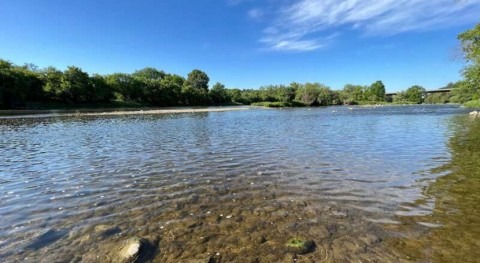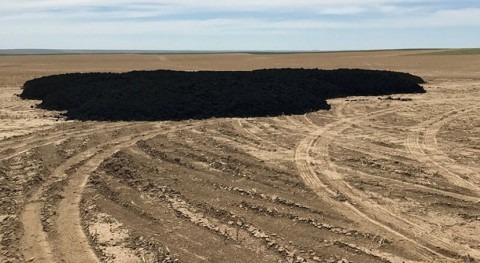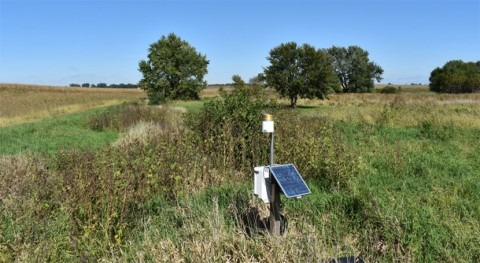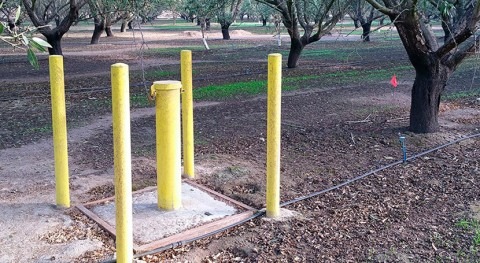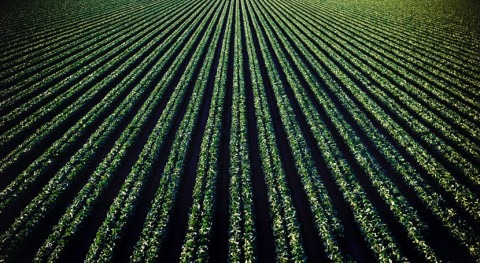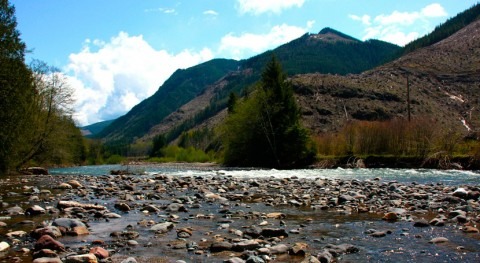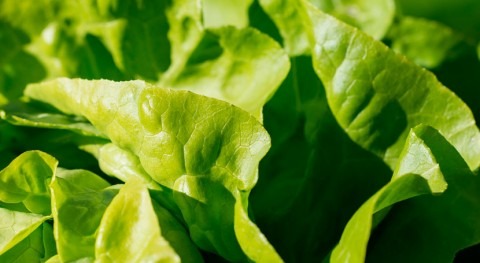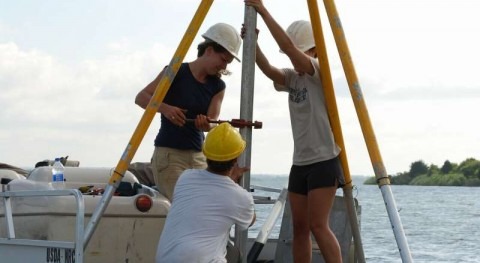Cities can have many benefits when designed well, including reducing carbon imprints. Another way cities can improve their environmental impact is by using "low-impact development" with regard to water management. It is also called "green stormwater infrastructure."
The Soil Science Society of America's (SSSA) September 1st Soils Matter blog explores how low-impact development provides planners with a toolbox of practices and approaches to manage water during rain events and snowmelt.
According to soil scientist and blogger John McMaine, on undeveloped lands with no impervious surfaces, only a small amount of rainfall (10%) becomes runoff. The natural landscape and soil manages the rain (or snowmelt) by storing, infiltrating, or through evapotranspiration. But in cities, where soil is covered with asphalt for roads, cement and other materials for sidewalks and parking lots, runoff becomes a problem. And buildings count, too.
Every time it rains in a city, rainfall hits pavement and runs off into streams, lakes, and ponds. There are few barriers between the source of runoff and the water body. In cities, during precipitation events, the level of water in streams and rates of flow can increase quickly. In natural and country landscapes, streams rise more slowly and over a longer period of time. Low-impact development replicates the natural water balance by reducing runoff and increasing infiltration.
A big driver for managing stormwater is to reduce local flooding. While flood reduction is an immediate and critical need, if cities just send water downstream using a curb, gutter, and storm sewer system, this just relocates the problem rather than resolving it. The approach of low-impact development is to use water management that gets as close as possible to the natural hydrology or water balance of a landscape.
Low-impact development replicates the natural water balance by reducing runoff and increasing infiltration
Cities can manage local and downstream flooding and peak flows using low-impact development. Using detention and retention basins, cities can create ways to capture and hold water, and release it at a controlled rate. These systems can reduce downstream peak flows, but do not reduce the total flow volume. Low-impact development reduces both peak flow and total flow volume, and it improves water quality.
In general, low-impact development works by slowing water down, spreading it out, and soaking it in. Conventional development connects systems of impervious surfaces to quickly send water downstream to mitigate local flooding. An example would be storm drains on a roadway attached to an underground piping system.
Low-impact development manages stormwater by capturing, storing, and treating it on-site. Water is held and infiltrates into the ground or distributed across the landscape. Low-impact development approaches can include landscape site design or structural practices.
Considering stormwater when a building site is designed could mean disconnecting impervious surfaces, such as directing roof runoff into a lawn instead of into a driveway connected to the street. This gives runoff an opportunity to soak into the ground instead of just flowing downstream. This is an easy, low-cost way to add function to a landscape to manage stormwater runoff more effectively.
Rain gardens and rain barrels are two of the most common strategies for homeowners. Rain gardens, or bioretention cells, are shallow depressions in the landscape that runoff is routed into. The water ponds for 24-48 hours as it slowly soaks into the soil. They are planted with flowers or shrubs that can withstand extremes in water—both flooding and drought. The plants also provide pollinator habitat and aesthetic value. Rain barrels are containers, often a 50-gallon barrel, which hold captured rainwater that can be used to water landscaping.
Cities, businesses, and institutions can implement a wide range of practices to help manage runoff. Impermeable, or impervious, sidewalks, parking lots, and roads can be made permeable, or pervious. Permeable pavement can be concrete, asphalt, or pavers. They feature a large amount of empty space that allow water to soak into the pavement. If you've seen water rushing off a parking lot during a rainstorm, you can imagine how much runoff can be reduced with permeable or pervious pavement. Medians, boulevards, shoulder areas, and rights of way are great candidates to include pervious pavement.
Low-impact development can be implemented by homeowners, businesses, or cities. Cost does not have to be a barrier when using low-impact strategies. All landscaping costs money—why not broaden the focus from only visual, to also functional. Green stormwater infrastructure can provide attractive landscaping features that also reduce peak flows and reduce runoff volume. It can improve water quality and depending on planting types can also provide habitat for pollinators. It's time that cities shift their paradigm to use landscapes to meet multiple objectives, not just to look good.




